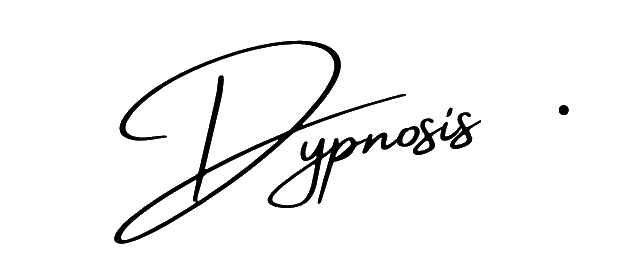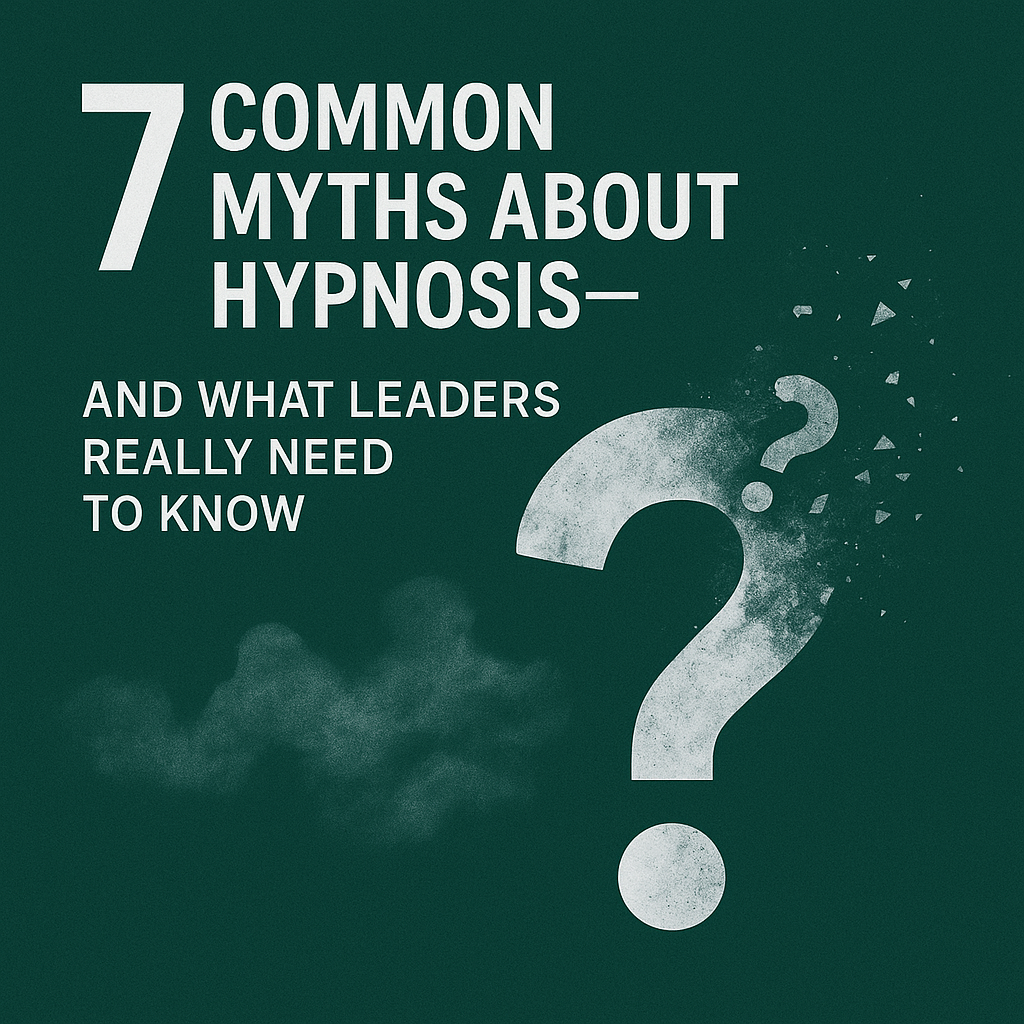In the high-pressure world of executive decision-making, clarity is not just beneficial—it’s essential. Yet, executives often find themselves grappling with cognitive overload, struggling to sift through vast amounts of information while navigating the complexities of their roles. Enter hypnosis, a tool that’s quietly transforming the way leaders approach their most critical choices. This isn’t about pulling rabbits out of hats or swinging pocket watches; it’s about accessing the untapped potential of the mind to enhance focus and reduce mental noise.
Imagine stepping into a boardroom with an unshakeable sense of calm and certainty, where every decision is met with clarity and confidence. Hypnosis offers this hidden edge, enabling leaders to cut through the clutter and act decisively. Recent studies have revealed its effectiveness in enhancing cognitive functions, helping executives tap into deeper layers of mental acuity. By incorporating hypnotherapy into their routine, leaders are discovering a powerful ally in their quest for success, making it an indispensable tool for those at the helm of businesses worldwide.
Understanding the Power of Hypnosis in Executive Decision-Making
Hypnosis is a scientifically supported mind-body approach that taps into the subconscious to influence thought patterns, behaviors, and decision-making processes. For executives constantly bombarded with high-stakes choices, the power of hypnosis lies in its ability to quiet mental chatter and align conscious intentions with deeper cognitive resources. Under a state of focused relaxation, the mind becomes more receptive to positive suggestions and strategic insights, allowing leaders to process complex information more swiftly and accurately.
When an executive enters a hypnotic state, brain imaging studies show increased synchronization between neural networks involved in attention and problem-solving. This heightened connectivity translates into improved pattern recognition and mental flexibility—qualities essential for navigating turbulent markets and organizational challenges. By deliberately engaging hypnosis, executives gain a structured method for entering peak performance zones, thereby reinforcing confidence and reducing the risk of decision paralysis.
Benefits of Hypnosis for Executives in Enhancing Clarity
The clarity derived from hypnosis extends beyond mere concentration; it cultivates a deeper sense of mental organization and emotional balance. Executives using hypnosis often report sharper memory recall, quicker access to critical insights, and an enhanced ability to prioritize objectives under pressure. This improved mental architecture allows leaders to distill vast data sets into actionable strategies without feeling overwhelmed by extraneous details.
Moreover, hypnosis aids in emotional regulation, a vital component of clear thinking. High-pressure environments can trigger stress responses that cloud judgment, but through hypnotic induction, executives learn to calm their autonomic systems and maintain equanimity. This balance not only preserves mental clarity but also fosters empathetic leadership, as regulated emotions lead to more thoughtful, ethical choices that resonate positively across teams and stakeholders.
Overcoming Cognitive Overload Through Hypnotherapy Techniques
Cognitive overload occurs when the volume and complexity of information exceed our brain’s processing capacity, leading to fatigue, indecision, and errors. Hypnotherapy techniques offer targeted interventions to alleviate this burden. Through guided imagery and progressive relaxation, executives can mentally offload distractions and create structured mental frameworks for tackling tasks sequentially.
One powerful method is the “mental folder” technique, in which, under hypnosis, leaders visualize compartmentalizing tasks into distinct categories. This mental filing system reduces mental scatter and promotes focused attention on one objective at a time. By practicing these techniques regularly, executives build resilience against cognitive stressors and maintain peak mental performance even in the most data-intensive scenarios.
Navigating Complexity: How Hypnosis Aids in Streamlining Decisions
Complex decisions often involve multiple variables and unpredictable outcomes. Hypnosis helps executives simplify these layers by enhancing intuitive problem-solving skills. During a hypnotic session, leaders are guided to access subconscious insights, enabling them to discern patterns and connections that might elude conscious analysis. This deepened awareness streamlines the decision process, turning overwhelming complexity into manageable, step-by-step plans.
Additionally, hypnosis reinforces mental models that executives use to evaluate risk and reward. By embedding these models into the subconscious through repetition and suggestion, leaders can more swiftly gauge potential outcomes and adjust strategies in real time. The result is a smoother decision-making flow, where complex scenarios are met with structured, confident responses rather than hesitation or doubt.
Enhancing Focus and Mental Clarity with Hypnosis Practices
Regular hypnosis practice functions as a mental conditioning regimen, much like strength training for athletes. Executives who incorporate brief hypnotic inductions into their daily routine report sustained improvements in sustained attention and reduced susceptibility to distractions. These practices typically involve a short pre-decision ritual—closing the eyes, taking measured breaths, and using a focused cue word to anchor the mind into a state of heightened awareness.
Over time, these rituals become automated, allowing leaders to enter a calm, focused state almost instantly, even in chaotic environments. This “on-demand clarity” can be a game-changer during critical presentations, negotiations, or crisis management, ensuring that every thought is deliberate and every action aligned with strategic objectives.
Case Studies: Success Stories of Executives Using Hypnotherapy
Consider the story of a Fortune 500 CEO who faced a pivotal merger decision under immense time pressure. Through a series of targeted hypnosis sessions, she achieved remarkable mental clarity, enabling her to see hidden synergies between the companies and negotiate terms that maximized shareholder value. Post-merger surveys revealed higher employee engagement, attributed in part to her calm, decisive leadership style.
In another example, a technology startup founder used self-hypnosis techniques to overcome analysis paralysis during fundraising rounds. By visualizing successful pitch outcomes and reinforcing confidence through suggestion, he secured key investors without faltering under pressure. His enhanced focus also accelerated product development cycles, helping the company hit critical benchmarks ahead of schedule.
Integrating Hypnosis into the Routine: Strategies for Effective Implementation
To reap the benefits of hypnosis, executives need a practical integration plan. Start by scheduling short daily sessions—ideally in the morning before the workday begins. Even five to ten minutes of guided hyponotic induction can prime the brain for focused, creative problem-solving. Consider using reputable apps or working with certified hypnotherapy coaches to tailor suggestions to specific leadership challenges.
Consistency is key. Just as physical fitness requires regular workouts, the cognitive gains from hypnosis cement themselves through repetition. Keep a reflective journal to track patterns—note which cues produce the deepest states of focus and document the improved decision outcomes. Over weeks, this iterative approach will refine the practice and embed it seamlessly into your executive routine.
The Future of Executive Decision-Making: Role of Hypnosis
Advances in neuroscience and wearable technology are poised to revolutionize how hypnosis is applied in leadership contexts. Emerging neurofeedback devices can monitor brainwave patterns in real time, providing instant feedback to optimize hypnotic inductions. Executives will soon have personalized digital coaches that fine-tune suggestions based on biometric data, ensuring peak cognitive performance before critical engagements.
Additionally, virtual reality (VR) platforms are being developed to create immersive hypnotherapy experiences, allowing leaders to practice deep-focus rituals in simulated high-pressure scenarios. These innovations promise to democratize access to hypnosis, making it an standard component of executive training programs and C-suite development curriculums worldwide.
Holistic Approach to Leadership: Combining Hypnosis with Traditional Skills
While hypnosis offers a distinct cognitive advantage, it works best when integrated with traditional leadership competencies. Emotional intelligence, strategic vision, and effective communication remain vital—hypnosis simply enhances these skills by sharpening mental clarity and emotional balance. Leaders who combine hypnotherapy with coaching in negotiation, conflict resolution, and team building create a powerful synergy that elevates overall performance.
By weaving hypnosis into broader development frameworks—alongside mentorship, workshops, and experiential learning—organizations cultivate resilient leaders capable of navigating uncertainty with poise. This holistic approach ensures that the psychological gains from hypnosis translate into actionable leadership practices that inspire trust and drive sustainable growth.
Conclusion: Empowering Executives for Confident Decision-Making with Hypnosis
In an era defined by rapid change and complex challenges, hypnosis emerges as a critical tool for executives seeking a competitive edge. By harnessing the mind’s subconscious potential, leaders can cut through mental noise, streamline decision processes, and maintain unwavering focus under pressure.
As more organizations recognize the tangible benefits of hypnosis—improved clarity, enhanced resilience, and sharper insight—it will become an integral part of executive toolkits worldwide. Embrace this hidden edge, and empower yourself to lead with confidence and precision.



